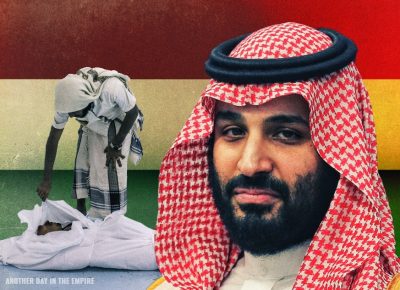Yemeni Houthis Defeating Paper Tiger Saudis

According to the Stockholm International Peace Research Institute (SIPRI), Saudi Arabia ranks third in global military spending after the US and China — allocating an estimated $65.5 billion in 2018.
The US, Britain and France are its main weapons, munitions, and related military equipment suppliers.
Despite enormous Saudi wealth devoted to militarism and warmaking, Houthi fighters are winning in Yemen, clearly spending a tiny fraction of what Riyadh budgets to partner with endless US war in Yemen — draining its resources, going into debt, achieving nothing.
Last May, the IMF estimated that the Saudi budget deficit will be 7.9% of GDP this year — based on average daily oil production of 10.2 million barrels at $65.5 a barrel.
On October 1, brent crude was at $58.76 a barrel. With the Saudis spending billions of dollars monthly on endless war in Yemen, the kingdom may go deeper in debt this year and ahead than forecast if it remains involved in a conflict it cannot win.
It’s only sensible option is cutting its losses and pulling out. Yemeni Houthis vowed to keep striking strategic targets in the kingdom otherwise, including its crown jewel oil facilities.
During a Tuesday press conference in Sana’a, Houthi General Yahya Saree said a second phase of its cross-border offensive, launched on September 3, captured 150 square km of Saudi territory, including three military bases, along with large amounts of weapons and munitions.
He added that Houthi combat drones struck the Najran airport and other area sites multiple times.
Press TV reported that Houthi air defenses countered 40 attacks by Saudi Apache helicopters. Territory captured included al-Fara’a and al-Sooh, 524 miles from Riyadh.
The Saudi capital is vulnerable to Houthi strikes if its forces continue endless war.
General Saree was quoted, saying:
“Our military operations will not stop once the (Saudi-led) aggression ceases.”
“Our armed forces will continue to implement various stages of Victory from God Almighty Operation till then. Our valiant army has weapons for deterrence, and is capable of repelling attacks.”
Saree stressed that the Najran offensive was the largest-scale Houthi operation since escalated war began in March 2015 — killing 200 Saudi soldiers and mercenaries, capturing 2,000 others, destroying or seizing large amounts of Saudi weapons, munitions, and related equipment.
He claimed possession of documents, showing involvement of ISIS and al-Qaeda jihadists, fighting alongside Saudi troops.
Along with the US, its key NATO allies and Israel, Riyadh actively supports these elements.
On October 1, AMN News reported that the so-called Saudi coalition “launched a big (ground and aerial) operation along the Yemeni border Tuesday…in the Abwab Al-Hadid area of the Asir province…scor(ing) a small advance…”
According to Houthi General Saree’s spokesperson, the Saudi coalition launched 39 airstrikes on northern Yemen, 34 targeting Sa’ada governorate.
In response, Houthis are likely to keep striking strategic kingdom targets. Notably its oil facilities are vulnerable to further attacks as long as its involvement in US war continues — clearly knowing it can’t be won.
How much longer will king Salman let his favorite son crown prince Mohammad (MBS) drain kingdom resources on a losing operation, achieving nothing?
When will he pull the plug on partnering with endless US war in Yemen?
*
Note to readers: please click the share buttons below. Forward this article to your email lists. Crosspost on your blog site, internet forums. etc.
Award-winning author Stephen Lendman lives in Chicago. He can be reached at [email protected]. He is a Research Associate of the Centre for Research on Globalization (CRG)
His new book as editor and contributor is titled “Flashpoint in Ukraine: US Drive for Hegemony Risks WW III.”
http://www.claritypress.com/LendmanIII.html
Visit his blog site at sjlendman.blogspot.com.
Featured image is from Another Day in the Empire

